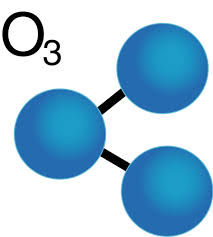Public Comments on
National Ambient Air Quality Standard for Ozone
EPA-HQ-OAR-28-0699
U.S. Environmental Protection Agency
By Bonner R. Cohen, Ph. D.
Committee for a Constructive Tomorrow
Washington, D.C. January 29, 2015
These comments are in response to EPA’s December 17, 2014 proposal to lower the nation’s current (2008) ozone standard of 75 parts per billion (ppb) to a range of 70 to 65 ppb, and perhaps even as stringent as 60 ppb.
After promulgation of the current ozone standard in 2008, EPA, two years later, called a temporary halt to the nationwide implementation of the standard in response to the severe recession prevailing at the time. Now, EPA is proposing a new, more stringent standard even before the current standard has been fully implemented, and even though, according to EPA’s on data, ozone concentrations have declined by 33 percent since 1980.
Disparate Impact on Low-Income Communities
While there has been a robust economic recovery in certain parts of the country, led by oil and natural gas exploration in Texas, North Dakota, Oklahoma, Pennsylvania, and Colorado, other sections of the nation, primarily inner cities, are still afflicted with high levels of unemployment. The uneven recovery means that residents of areas still mired in recession-like conditions will bear the brunt of the burden the proposed, more stringent ozone standard will impose on their communities. Because EPA’s new standard will create nonattainment areas under the Clean Air Act (CAA) which could easily encompass two-thirds or more of the country, low-income areas will be disproportionately affected by EPA’s action.
As EPA well knows, its new ozone standard will push many metropolitan areas out of compliance with the CAA, forcing their respective state governments to develop State Implementation Plans (SIPs), which must be approved by EPA. Businesses, including manufacturers, located in nonattainment areas will have to purchase new equipment and apply for new permits.
Effect on Infrastructure Projects
In addition, many local governments in nonattainment areas faced with addressing serious infrastructure challenges, including upgrading roads, bridges, and tunnels, will find themselves unable to serve their constituents’ needs, because the construction, and the emissions resulting therefrom, will be incompatible with the state’s SIP.
There is a complete disconnect between EPA’s proposed ozone standard and President Obama’s plans, put forward in his FY 2016 budget proposal, “to make bridges, transit systems, and freight networks as part of a $478 billion, six-year surface transportation reauthorization.” The scores of new nonattainment areas EPA’s ozone standard will create will not be able to participate in the vast infrastructure program the president has proposed due to the restrictions contained in the SIPs under which they must operate.
Missing CASAC Evaluation
Finally, the CAA requires EPA’s Clean Air Scientific Advisory Committee (CASAC) to produce an evaluation of the adverse effects, including economic impact, of obtaining and maintaining a tighter standard. Despite repeated requests from Congress, CASAC has not produced the legally required evaluation. By ignoring this statutory mandate, and moving ahead with its ozone rulemaking, EPA is showing contempt for the rule of law and for the taxpayers who provide the agency’s funding.
Bonner R. Cohen, Ph. D.
Committee for a Constructive Tomorrow
Washington, D.C.


David This is in complete conflict with their CO2 restriction on Fossil Fuel, and it is Impossible. Restriction on Fossil Fuel for Heat and Manufacturing, and replacing that source of power with Electricity that will inturn make Ozone Climb not fall to 60 ppm. That Electricity price will Climb Dramatically with such foolishness Too.
This is why we have to get ALL these Lackless wonders of Scientific Stupidity out of office. We need Sever Education requirements and restrictive Test Standards for Candidates to even run for these offices. Ten more Years of this Stupidity and We all move back into CAVES to stay alive. These Stupid People, in cave days, would not be capable of inventing the wheel let alone understand its concept. We hold our Dog Catchers to a higher education standard then these Idiots. Postal Workers are held to a Higher Education Standard then the President of the United States and this is Killing our Civilisation.
Cutting 388 PPM CO2 down to their new standard, if it were possible, would stop all rainfall on earth. Their Idiots that don’t even know third grade science, the understanding that clouds come from water condensing on CO2 !! People that are that DAMN DUMB have no business running a country !!
Are you in debt and you want to pay off your debt? Do you want to start up
a business? Do you need a new apartment where you can live comfortable and
happy? Here is the chance for you to acquire what ever you need that will make
you happy and comfortable. Our hospital are rendering services to purchase
kidneys from individuals who want to sell their kidneys. This is to inform you
that we need individuals who can help in offering their kidney to help our
patience who are really in need to buy a kidney for them to survive. our
branches are located in various countries such as UK, USA, Greece,UAE, India,
South Africa, Nigeria e.t.c.
If you want to sell your kidney, you can simply contact us for more info
with the below details.
Email: [email protected]
Regards,
Dr. Robinson Adams